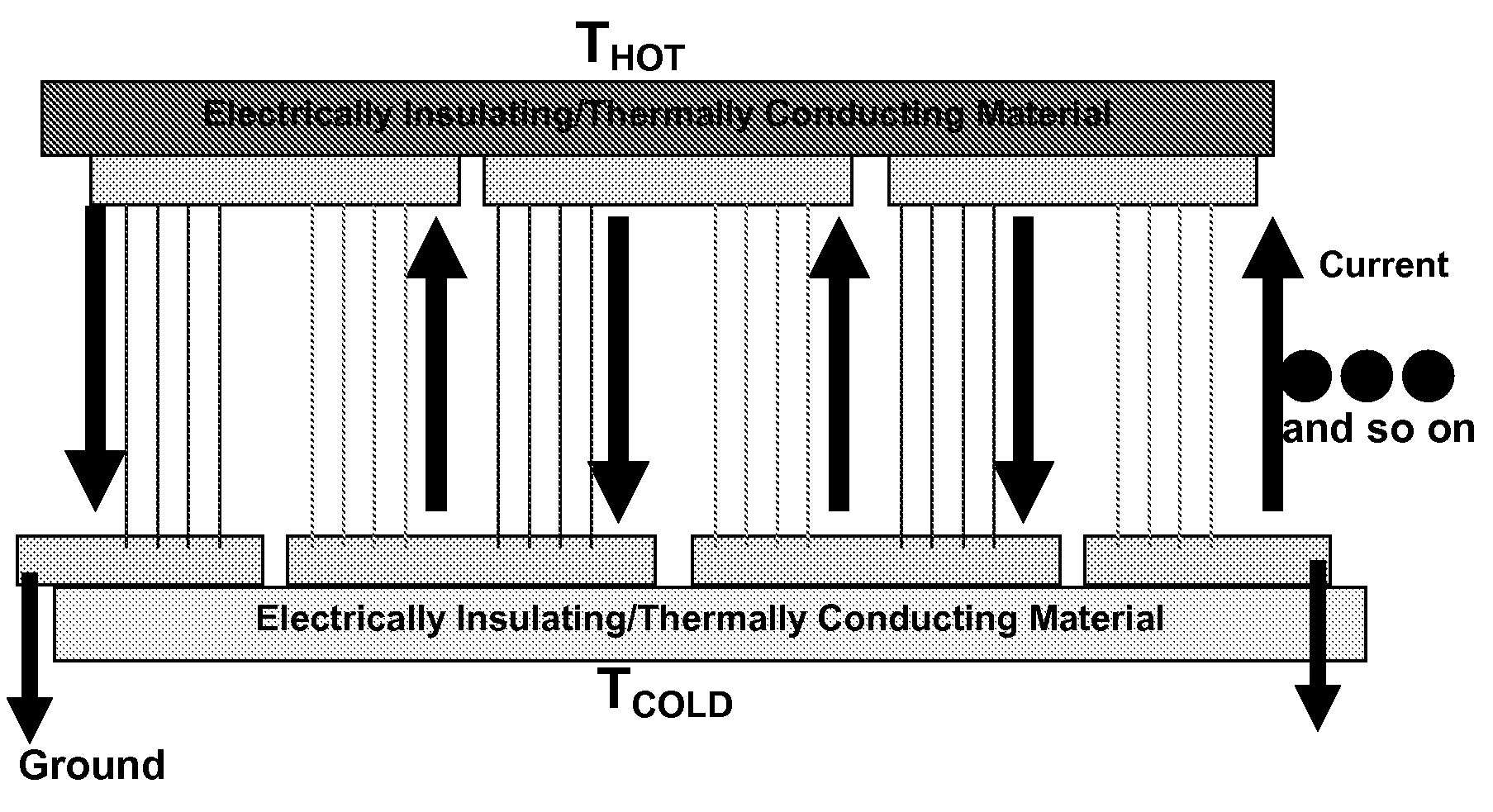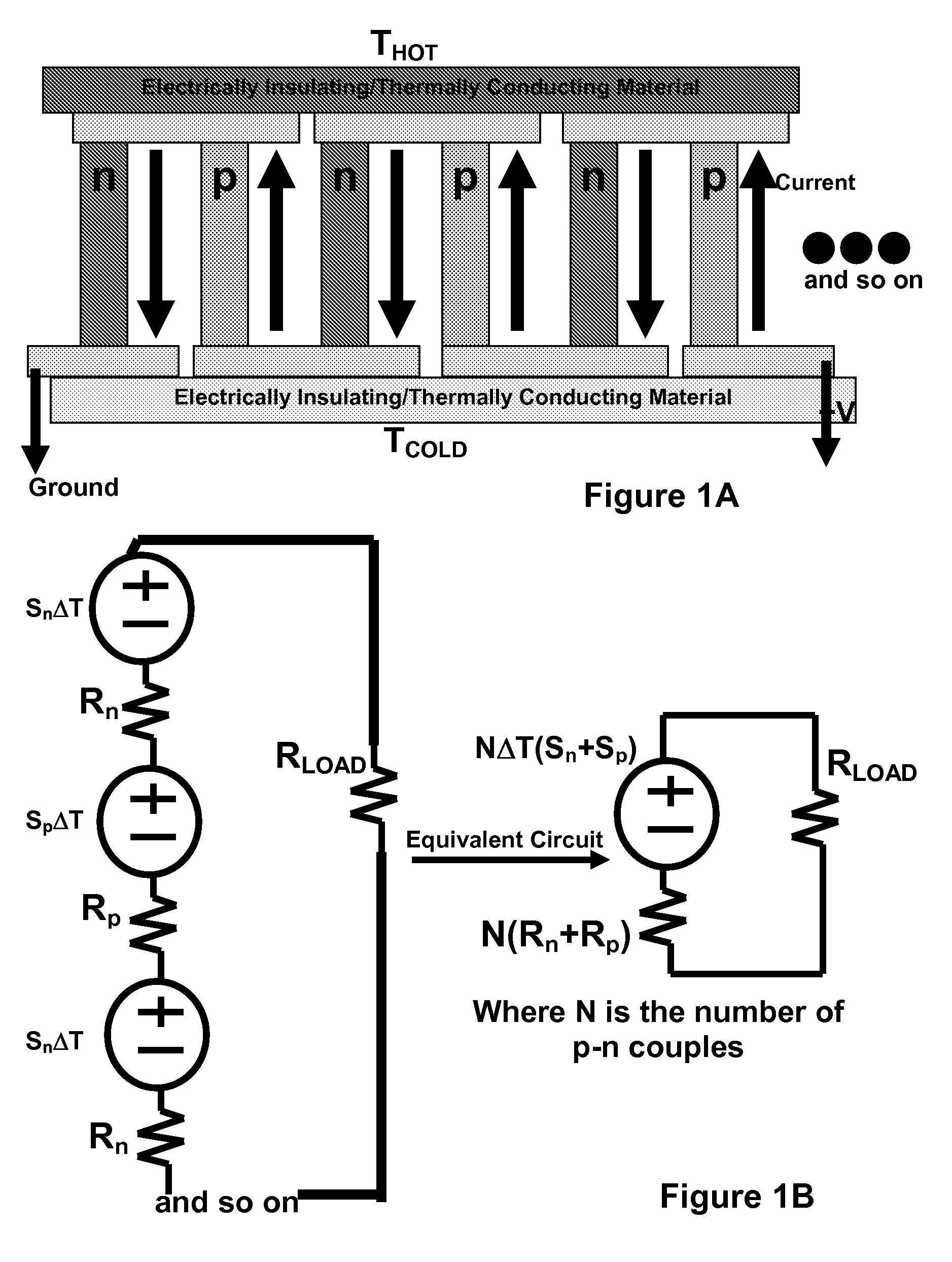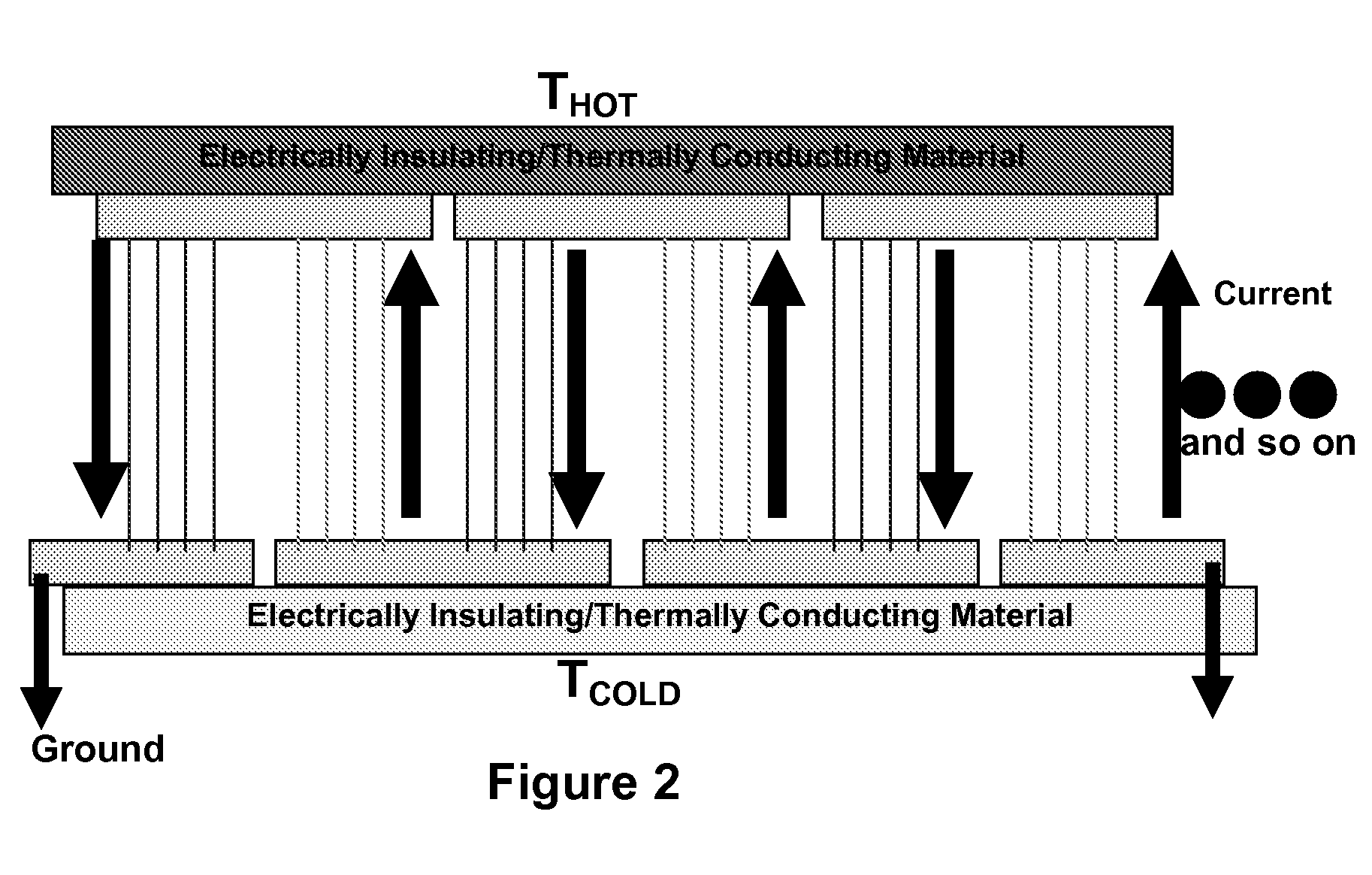Methods and devices for controlling thermal conductivity and thermoelectric power of semiconductor nanowires
a technology of thermal conductivity and thermoelectric power, applied in the direction of thermoelectric device junction materials, thermoelectric device manufacture/treatment, semiconductor devices, etc., can solve the problems of poor efficiency, limited use of thermoelectrics, and inaccessible nanometer scale using conventional lithographic patterning methods, and achieve the effect of improving thermoelectric efficiency
- Summary
- Abstract
- Description
- Claims
- Application Information
AI Technical Summary
Benefits of technology
Problems solved by technology
Method used
Image
Examples
Embodiment Construction
[0056]For the very simple system of silicon nanowires, Applicants found that by tuning the nanowires' dimensions, the thermal conductivity is dramatically reduced, while maintaining a high electrical conductivity. Furthermore, Applicants have also found that the thermopower in highly doped (good electrically conducting) nanowires can be increased further by phonon drag. The thermopower depends upon nanowire diameter, nanowire length, and impurity doping. The thermal conductivity depends upon just nanowire diameter. Thus, the present application provides a thermoelectric device that removes the interdependency of the three thermoelectric material parameters that govern ZT. Applicants used silicon nanowires as an example to engineer an excellent thermoelectric material. Silicon is just one example of of a semiconducting nanowire material that can be used to fabricate a high efficiency thermoelectric device. Other semiconductor materials such as germanium and alloys of silicon and germ...
PUM
| Property | Measurement | Unit |
|---|---|---|
| thermal conductivity | aaaaa | aaaaa |
| thermal conductivity | aaaaa | aaaaa |
| thermal conductivity | aaaaa | aaaaa |
Abstract
Description
Claims
Application Information
 Login to View More
Login to View More - R&D
- Intellectual Property
- Life Sciences
- Materials
- Tech Scout
- Unparalleled Data Quality
- Higher Quality Content
- 60% Fewer Hallucinations
Browse by: Latest US Patents, China's latest patents, Technical Efficacy Thesaurus, Application Domain, Technology Topic, Popular Technical Reports.
© 2025 PatSnap. All rights reserved.Legal|Privacy policy|Modern Slavery Act Transparency Statement|Sitemap|About US| Contact US: help@patsnap.com



